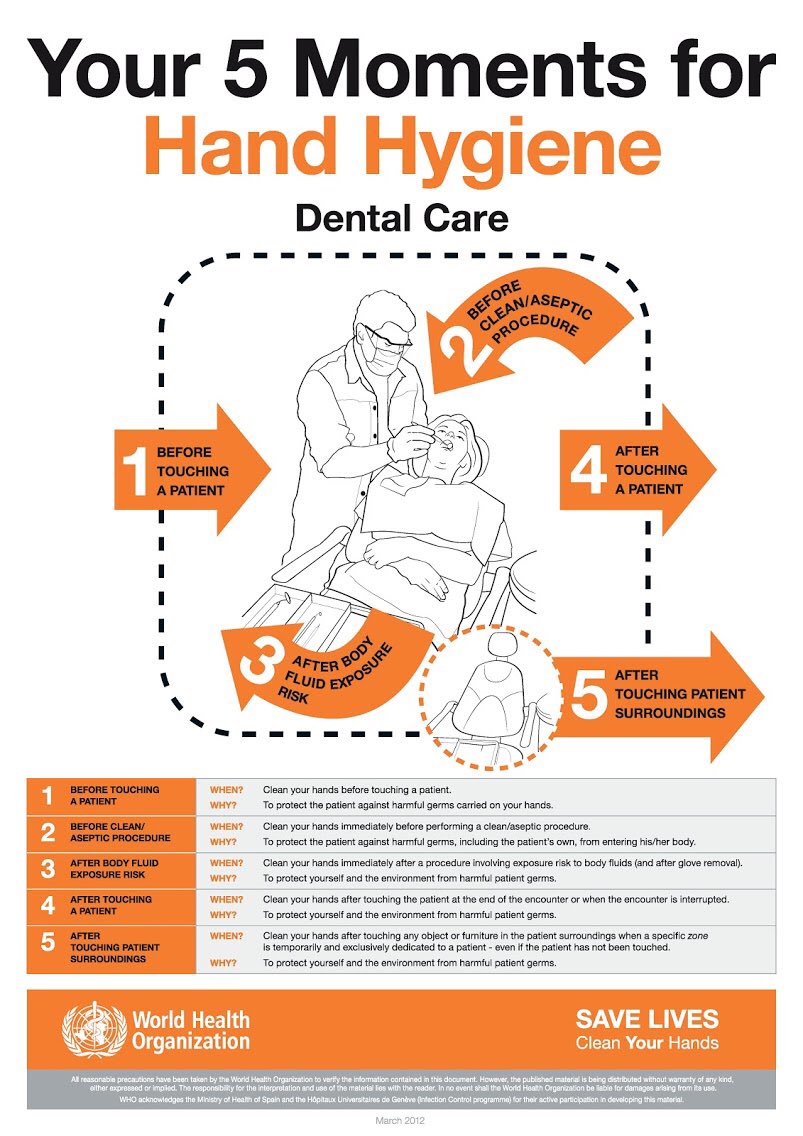

Gloves should be removed to perform hand hygiene during the care for a single patient as indicated by the 5 Moments for Hand Hygiene.Hand hygiene should be performed after removing gloves.Hand hygiene should be performed before putting on gloves.During the care of a single patient, to prevent cross-transmission of body sites.Between episodes of care for different patients, to prevent transmission of microorganisms.Where indicated by local infection control policy, for example with transmission based precautions.When there is a risk of contamination of the healthcare workers hands with blood or body fluids.Microorganisms may gain access to the healthcare workers' hands via small defects in gloves, or by contamination of the hands during glove removal. Wearing gloves does not replace the need for hand hygiene, as gloves do not provide complete protection against hand contamination. The World Health Organization (WHO) has developed the following posters on performing hand hygiene:

Washing hands with water and either antimicrobial or non-antimicrobial soap or soap solution.Applying an alcohol-based hand rub to the surface of hands (including liquids, gels and foams).Hand hygiene is a general term referring to any action of hand cleansing, which includes: Wash with soap and water when hands are visibly dirty or contaminated with proteinaceous material, or visibly soiled with blood or other body fluids, or if exposure to potential spore forming organisms is strongly suspected or proven, or after using the bathroom.

Use an alcohol-based hand rub for all clinical situations where hands are visibly clean. The information below is about hand hygiene in healthcare settings.įor information on hand hygiene in the community and at home for COVID-19 prevention visit: /covid-19 Hand Hygiene


 0 kommentar(er)
0 kommentar(er)
